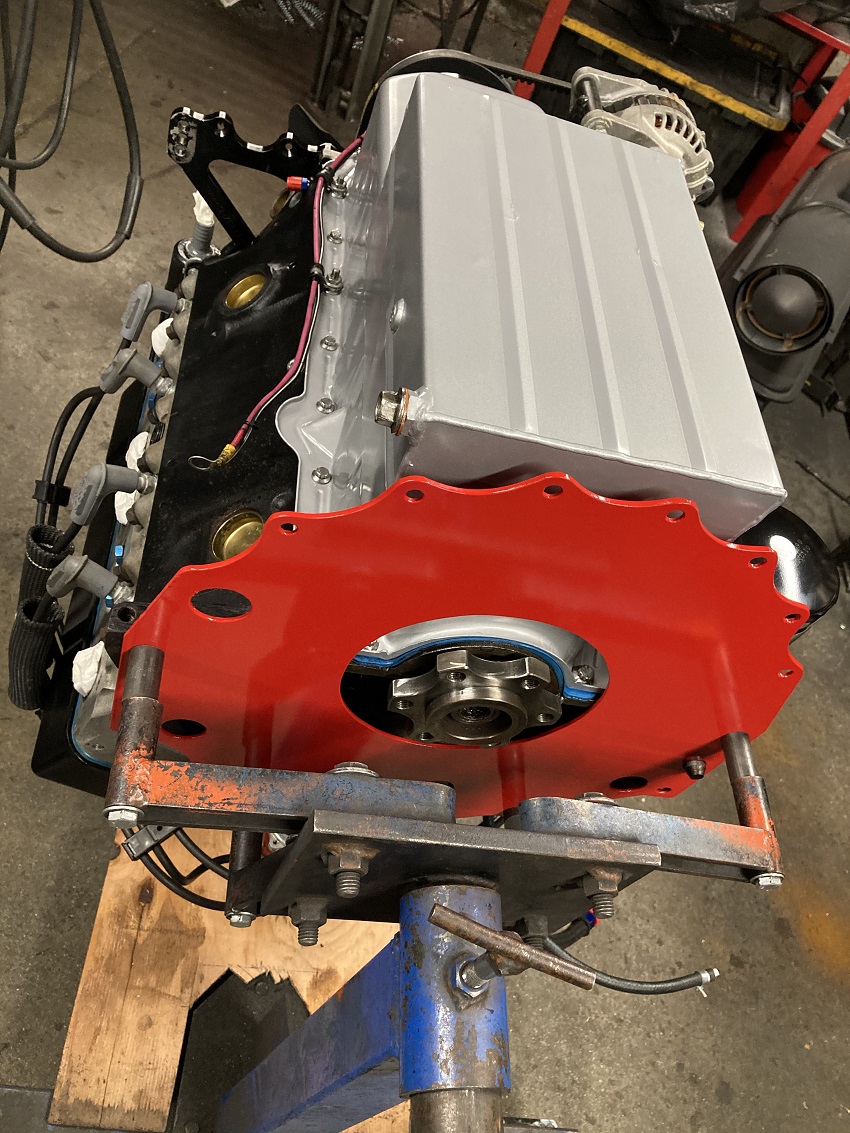weedburner
Well-Known Member
I made this simple balance checking fixture yesterday, wanted something to quickly verify flywheel and PP balance at home. My first pass at this was just proof of concept using materials I already had on the rack, basically angle iron and some cold rolled shafting. Turned out it works pretty good for what it is, detects an an out of balance 2 grams on a 6" radius. Plan is to use it to verify neutral balance of the flywheel first, then add the pressure plate to further balance the assembly. Here's some pics with an old cast flywheel i had laying around, here you can see some leveling screws installed in the base. The arbor was made by turning an appropriately sized hub and then using red loctite to fix it onto a section of cold rolled shaft...

Here you can see that one end of the support shafts non-adjustable, just holes for the pins that are threaded into the shafts...

Here you see the other end of the support shafts, which go into slotted holes with adjustment screws to allow adjustment for parallel of the support shafts...

Here you can see that the old flywheel, supposedly neutral balanced originally, required 43 grams applied to it's rim to achieve neutral balance...

To further reduce friction and improve resolution, i'm going to order some chromed hydraulic cylinder shafting. Flywheel is a simple disc with not many choices as to where to put balancing holes, if I can get resolution down to 1 gram @ 6" i'll call it good. I know static balancing isn't as good as what's possible using an actual dynamic balancing machine, but at least I'll know it's close enough for what i'm doing. Think i'll also make some arbors to check my clutch discs and brake rotors too.
Grant
Here you can see that one end of the support shafts non-adjustable, just holes for the pins that are threaded into the shafts...
Here you see the other end of the support shafts, which go into slotted holes with adjustment screws to allow adjustment for parallel of the support shafts...
Here you can see that the old flywheel, supposedly neutral balanced originally, required 43 grams applied to it's rim to achieve neutral balance...
To further reduce friction and improve resolution, i'm going to order some chromed hydraulic cylinder shafting. Flywheel is a simple disc with not many choices as to where to put balancing holes, if I can get resolution down to 1 gram @ 6" i'll call it good. I know static balancing isn't as good as what's possible using an actual dynamic balancing machine, but at least I'll know it's close enough for what i'm doing. Think i'll also make some arbors to check my clutch discs and brake rotors too.
Grant

















